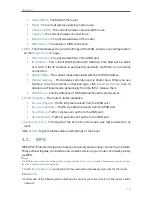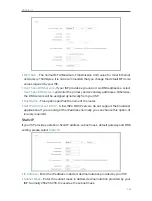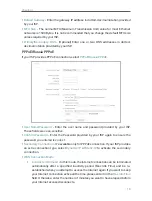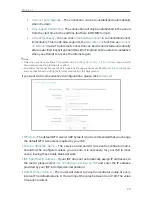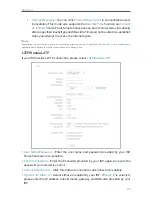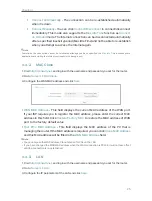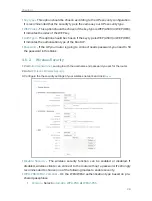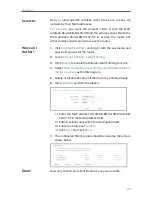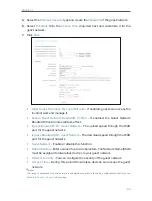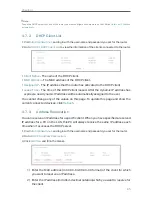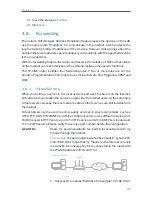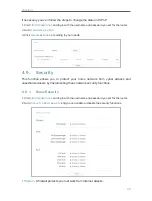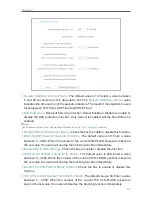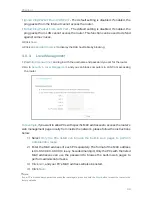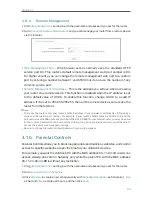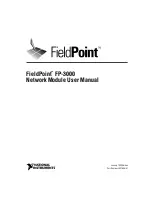
29
Chapter 4
•
Encryption
- Select
Automatic
,
TKIP
or
AES
.
•
Wireless Password
- Enter ASCII or Hexadecimal characters. For Hexadecimal,
the length should be between 8 and 64 characters; for ASCII, the length should
be between 8 and 63 characters.
•
Group Key Update Period
- Specify the group key update interval in seconds.
The value can be 0 or at least 30. Enter 0 to disable the update.
•
WPA /WPA2-Enterprise
- It’s based on Radius Server.
•
Version
- Select
Automatic
,
WPA
or
WPA2
.
•
Encryption
- Select
Automatic
,
TKIP
or
AES
.
•
Radius Server IP
- Enter the IP address of the Radius server.
•
Radius Port
- Enter the port that Radius server used.
•
Radius Password
- Enter the password for the Radius server.
•
Group Key Update Period
- Specify the group key update interval in seconds.
The value should be 30 or above. Enter 0 to disable the update.
•
WEP
- It is based on the IEEE 802.11 standard.
•
Type
- The default setting is
Automatic
, which can select Shared Key or Open
System authentication type automatically based on the wireless client’s
capability and request.
•
WEP Key Format
- Hexadecimal and ASCII formats are provided here.
Hexadecimal format stands for any combination of hexadecimal digits (0-9,
a-f, A-F) in the specified length. ASCII format stands for any combination of
keyboard characters in the specified length.
•
WEP Key (Password)
- Select which of the four keys will be used and enter the
matching WEP key. Make sure these values are identical on all wireless clients
in your network.
•
Key Type
- Select the WEP key length (64-bit, 128-bit or 152-bit) for encryption.
Disabled
means this WEP key entry is invalid.
•
64-bit
- Enter 10 hexadecimal digits (any combination of 0-9, a-f and A-F. Null
key is not permitted) or 5 ASCII characters.
•
128-bit
- Enter 26 hexadecimal digits (any combination of 0-9, a-f and A-F. Null
key is not permitted) or 13 ASCII characters.
•
152-bit
- Enter 32 hexadecimal digits (any combination of 0-9, a-f and A-F. Null
key is not permitted) or 16 ASCII characters.
4. 5. 3. Wireless MAC Filtering
Wireless MAC Filtering is used to deny or allow specific wireless client devices to access
your network by their MAC addresses.

